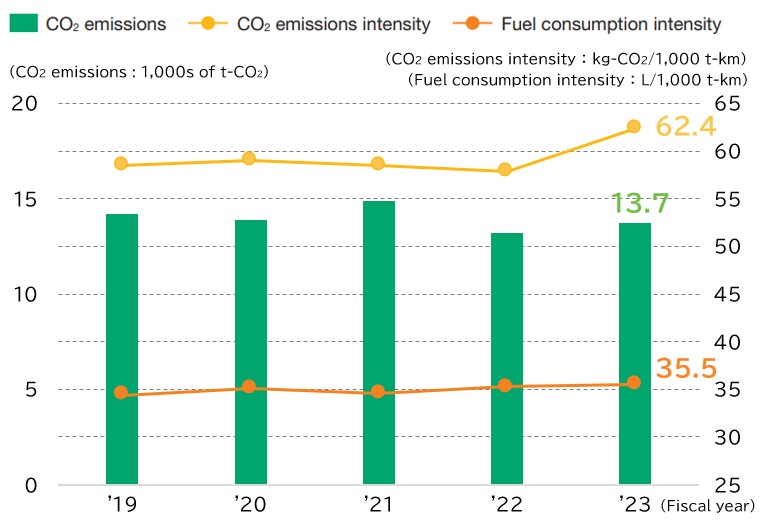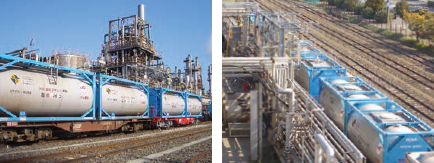Efforts for Eco-Friendly Logistics
Promoting White Logistics to Reduce Environmental Impact
To tackle climate change and prevent air pollution in logistics, we are making efforts to reduce fuel consumption intensity and CO2 emission intensity and undertaking emissions countermeasures.
Although changes in traffic volume and the means of transportation resulting from economic conditions impact fuel consumption intensity and CO2 emission intensity, we are deploying four measures to reduce CO2 emission intensity: promoting modal shifts, improving transport efficiency, using digital tachographs linked to vehicle GPS and dashboard cameras, and saving energy in operations through efforts such as fitting vehicles with eco tires and switching engines off when vehicles are not in use.
As part of efforts to prevent air pollution, we are implementing three measures: eco-driving and displays indicating our commitment to eco-driving (eco-driving decals), avoiding the use of vehicles that do not satisfy the requirements of the Automotive NOx and PM Act, and proactively using low-pollution, fuel-efficient vehicles.
Also, given the increasing severity of the truck driver shortage in the logistics industry, we embrace and are working to promote the White Logistics movement that aims to realize more sustainable logistics. We are working to improve loading and unloading, streamline transport—for example shifting from long-distance trucking to roll-on/roll-off ship and railway transport and joint transport with competitors—and promote other efforts to improve productivity and create better working environments for women and older truck drivers.
Furthermore, we believe this movement concurrently helps reduce environmental impact.
Trends in Fuel Consumption Intensity and CO2 Emissions/CO2 Emission Intensity in Domestic Logistics

